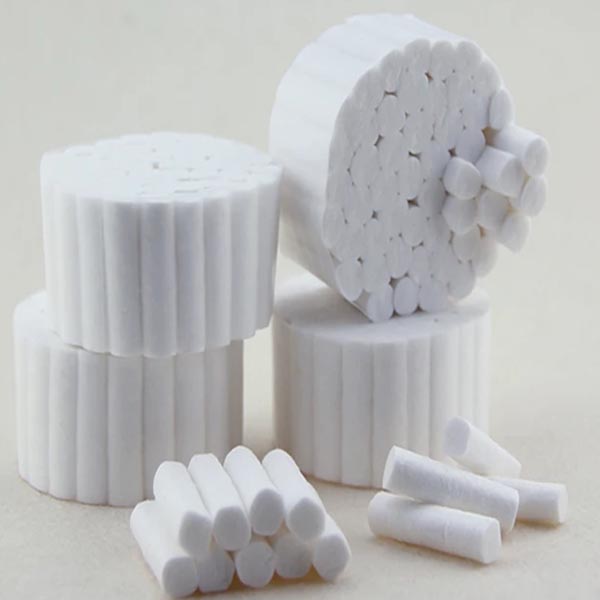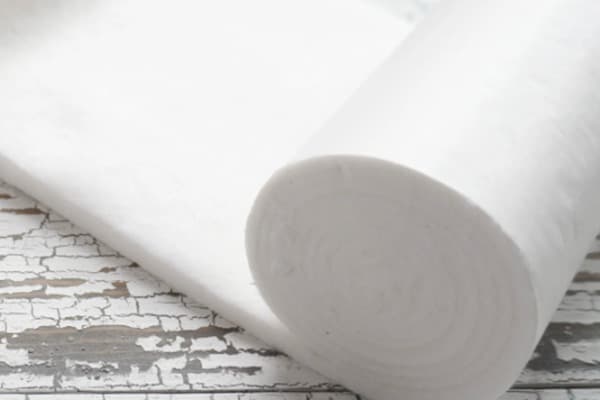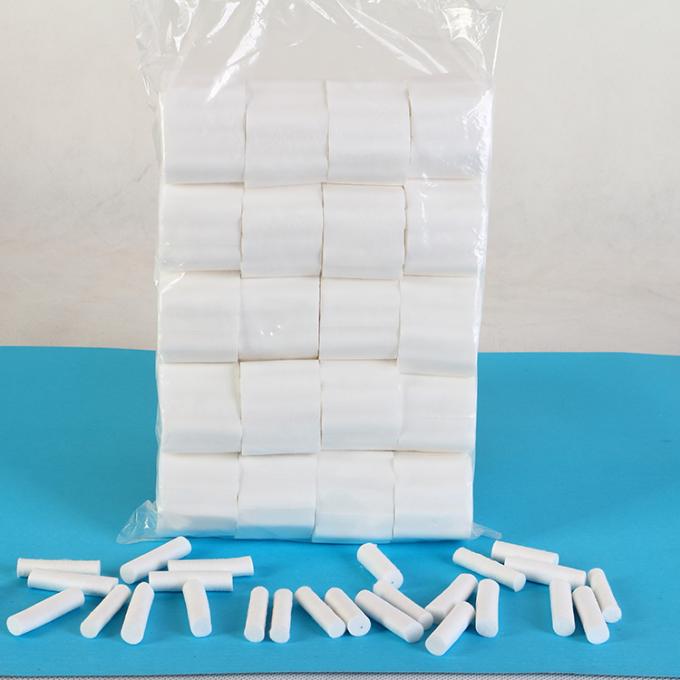Maareeyaha wax soo iibsiga ee cisbitaalka mashquulka ah sida Mark Thompson ee USA, maaraynta agabka alaabada waa dheelitirnaanta qiimaha, tayada, iyo diyaarsanaanta. Markaad dalbanayso sahayda sida daawada duub suuf ah, shay fudud oo u muuqda, su'aal muhim ah ayaa soo baxaysa: sidee dheer ma waarta? Fahamka nolosha shelf ee a duub suuf ah ma aha oo kaliya in laga fogaado qashinka; waxay ku saabsan tahay hubinta badbaadada bukaanka iyo ilaalinta heerarka ugu sarreeya ee daryeelka. dhacay duubid waxay lumin kartaa nuugitaankeeda iyo, haddii ay madhalays tahay, daacadnimadeeda, oo khatar gelinaysa goobaha caafimaadka. Aragtidayda Allen, oo ah soo saaraha alaabta caafimaadka ee Shiinaha oo leh toddobo khad wax-soo-saar, waxaan arkaa dhammaan wareegga nolosha duub suuf ah, laga bilaabo fiber ceeriin ilaa final baakad. Maqaalkani wuxuu ku siin doonaa hage dhammaystiran oo ku saabsan cimri dhererka caafimaadka duub suuf ah, Qodobbada saameeya, iyo sida loo hubiyo inaad had iyo jeer haysato alaab tayo sare leh oo wax ku ool ah gacanta.
Waa maxay Saxda ah duubista Cudbiga caafimaad maxayse Muhiim u tahay?
Caafimaad duub suuf ah waa dhululubo kaar ah oo la safeeyey cudbi, loogu talagalay tiro balaadhan oo ah codsiyada caafimaadka iyo ilkaha. Si ka duwan kan cudbi kubbadaha waxaad ka heli kartaa dukaanka tafaariiqda, heerka caafimaadka cudbi Waxaa mara hab sifeyn adag si looga saaro dhammaan wasakhda, abuurka, iyo saliidaha dabiiciga ah, taasoo ka dhigaysa mid aad u nuugaya. Asal ahaan isticmaal ee a duub suuf ah waa in la nuugo dareeraha sida candhuufta, dhiiga, ama soobaxa nabarka. Dhakhaatiirta Ilkaha, waxay lagama maarmaan u yihiin ka soocida ilkaha qoyaanka inta lagu jiro hababka. Guud ahaan caafimaadka daryeel, a duubid ee cudbi waa la gooyn karaa cabbirka si loogu nadiifiyo nabarrada, suufka kabiyeyaasha hoostooda, ama sida qayb nuugista ah ee labiska caadada ah.
Kala duwanaanshaha ee duub suuf ah wuxuu ka dhigayaa mid muhiim u ah isbitaal kasta, rug kasta, iyo xirmada gargaarka degdegga ah. Waa qalab wax ku ool ah oo dhaqaale leh. Hadday tahay mid yar, oo aad u nuugaya Duubista Cudbiga Ilkaha ee Madhalayska ah uu isticmaalo dhakhtarka ilkuhu ama ka weyn oo aan nadiif ahayn duubid loo isticmaalo nadiifinta guud, sifooyinka aasaasiga ah ee cudbi-jilicsanaanteeda, daahirnimadeeda, iyo nuugisteeda - ayaa ah waxa ka dhigaya mid qiimo leh. Baahida joogtada ah ee alaabtan ayaa hoosta ka xariiqaysa muhiimada ay u leedahay daryeelka caafimaad ee maalinlaha ah.
Sidee buu Habka Wax-soo-saarku u saameeyaa cimri-dhererka duubista suufka?
Safarka ka yimid qalafsanaan cudbi boll ilaa lebbiska caafimaadka duub suuf ah waa hannaan sax ah oo si toos ah u saameeya xasilloonidiisa iyo nolosha shelf. Soo-saare ahaan, waxaanu xakameynaa tallaabo kasta si aan u hubinno in badeecada ugu dambeysa ay tahay mid waxtar leh oo waara labadaba. Waxay ku bilaabataa xulashada suuf tayo sare leh fiber. Ceyriinka cudbi ka dibna si farsamaysan ayaa loo nadiifiyaa, la xoqay, oo la warankiilay si loo gaadho caddaan saafi ah, xaalad aad u nuugaysa. Nadiifintaani waa muhiim; Walxaha dabiiciga ah ee soo haray waxay hoos u dhigi karaan waqti ka dib, taasoo saameynaysa cimriga alaabta.
Daahirinta ka dib, the suuf suuf ah waa kaar - waa hab isku toosiya fiilooyinka hal jiha - ka hor inta aan loo samayn si joogto ah, cufan duubid. Intan oo dhan soo saarid habka, deegaanka si adag ayaa loo xakameeyaa si loo yareeyo soo-gaadhista wasakhooyinka. Wixii alaabta nadiifka ah, the duub suuf ah ka dibna la maro habka jeermiska ee la ansaxiyay ka hor inta uusan dhamaanin baakad. Fiiro gaar ah leh soo saarid nidaamku kaliya ma abuuro wax soo saar ka wanaagsan isla markiiba isticmaal; waxay abuurtaa badeeco xasilloon oo awood u leh sii wad daacadnimadeeda sannadaha kaydinta.

Nooca suufka ah ee la isticmaalo wax ma ka bedelaa nolosha shelf?
Dhab ahaantii. Tayada alaabta ceeriin ayaa ah aasaaska badeecada caafimaad ee waarta. The ugu fiican uguna xasilloon duub suuf ah waxaa laga sameeyay 100% saafi ah, heerka caafimaadka cudbi. Tani suuf heersare ah ka kooban yahay dheer, fiilooyinka adkeysi leh ee iska caabiya burburka waqti ka dib. Waxay bixisaa nuugista sare iyo jilicsanaanta, kuwaas oo ah hawlaha asaasiga ah ee duubid. Markaad aragto badeecada ku calaamadsan "100% Cudbi," waxaad filan kartaa inay u shaqeyso si la isku halleyn karo inta lagu sheegay nolosha shelf.
Qaar ka mid ah beddelka qiimaha jaban ee suuqa ayaa laga yaabaa inay a isku dar ee cudbi iyo fiilooyinka synthetic sida rayon, polyester ama naylon. Inkasta oo isku-dhafkan ay wali noqon karaan kuwo nuugi kara, soo bandhigida alaabta kale waxay bedeli kartaa sifooyinka alaabta. Tan ka sii muhiimsan, xasilloonida muddada dheer ee isku dhafka fiber-ka ayaa laga yaabaa inay ka duwanaato tan suuf saafi ah. Codsiyada caafimaad ee muhiimka ah, gaar ahaan marka alaabtu si toos ah ula xiriirto unugyada xasaasiga ah ama nabarrada furan, dabeecadda la saadaalin karo oo la isku halayn karo ee 100% duub suuf saafi ah had iyo jeer waa ka sarreeya doorasho. Waa tafaasiisha muhiimka ah ee la raadiyo marka la raadinayo alaabtaada.
Waa maxay Nolosha Shelf ee Caadiga ah ee Duubka Cudbiga Madhalays ah?
Tani waa su'aasha udub dhexaad u ah qof kasta oo maareynaya agabka caafimaadka. Guud ahaan, si habboon loo soo saaray oo baakadaysan duudduuban suuf caafimaad oo nadiif ah wuxuu leeyahay a nolosha shelf ee 3 ilaa 5 sano laga bilaabo taariikhda soo saarid. Wakhtigan waxaa lagu go'aamiyaa iyada oo loo marayo tijaabinta xasilloonida, halkaas oo soo saaruhu uu ku qiimeeyo daacadnimada alaabta iyo madhalaysnimada waqti ka dib xaalado kala duwan. Taariikhda dhicitaanka ee lagu daabacay baakad waa dammaanad in, ilaa taariikhdaas, alaabtu ay ahaan doonto mid aan nadiif ahayn oo ay u fulin doonto sidii loogu talagalay, iyadoo la bixinayo baakad si sax ah ayuu u ahaanayaa oo si sax ah ayaa loo kaydiyaa.
Wixii aan nadiif ahayn duub suuf ah alaabta, fikradda ah ee adag nolosha shelf waa ka yara duwan yahay. In kasta oo ayan haysan taariikhda dhicitaanka ku salaysan dhalmada, haddana way hoos u dhigi karaan waqti ka dib. Soo-gaadhista qoyaanku waxay u horseedi kartaa caariyaysi, boodhkuna wuu sumayn karaa duubid. Sababtan awgeed, xitaa aan nadiif ahayn cudbi waa in si fiican loo isticmaalo ilaa 5 sano gudahood si loo hubiyo inay nadiif tahay oo waxtar leedahay. Alaabooyinka qaarkood, qiyaasta muxaafidka ayaa ah inay awoodaan waxay soconaysaa ilaa 2-3 sanolaakiin sareWax-soo-saarka tayada ayaa tan si weyn u kordhin kara.
Sidee bay Baakadu u saamaysaa ilaa intee le'eg ee duubista suufku soconaysaa?
Baakadaha waa mid ka mid ah qodobbada ugu muhiimsan ee ilaalinta nolosha shelf ee caafimaadka duub suuf ah, gaar ahaan mid aan nadiif ahayn. Waxay u adeegtaa sida caqabada koowaad ee ka dhanka ah adduunka ka baxsan, ilaalinta cudbi laga bilaabo qoyaanka, microbes-ka hawada laga qaado, iyo wasakhowga jirka. Warshadayada, waxaanu isticmaalnaa heer caafimaad oo adag baakad qalab loogu talagalay in la abuuro iyo sii wad deegaan nadiif ah. Tani waxay inta badan ku lug leedahay boorsooyin xaashi ah oo waara ama bacaha balaastigga ah kuwaas oo la xidhay si aan loo ilaalin hawo iyo qoyaanka.
Xirmada la jabiyay macnaheedu waa badeeco la jabiyay. Ilmo yar, shaabad guuldarraysatay, ama dalool ayaa keeni karta madhalays duub suuf ah aan nadiif ahayn oo aan ammaan ahayn loogu talagalay loogu talagalay isticmaal. Marka la helayo shixnad, waxaa muhiim ah in la kormeero baakad mid walba duubid. Tani waa sababta aan u maalgalino ilaalinta tayada our baakad sida ugu badan ee aan u samayno cudbi lafteeda. Haboon baakad waa habka kaliya ee lagu xaqiijin karo in a duub suuf ah la soo saaray maanta weli waxay noqon doontaa mid ammaan ah oo waxtar leh isticmaal dhowr sano ka dib.

Kaydinta aan saxda ahayn ma dumin kartaa duubka suufka ah ee saxda ah?
Haa, shaki la'aan. Xataa ka ugu fiican warshadaysan duub suuf ah oo leh kuwa ugu horumarsan baakad waxaa lagu burburin karaa kaydin aan habboonayn. Ku sii wad daacadnimada badeecada oo hubi in ay gaadho ugu badnaan nolosha shelf, raacaya habboon habraaca kaydinta waa lama huraan. Waa kuwan mabaadi'da muhiimka ah ee kaydinta saadka caafimaadka ee aanu kula talineyno dhammaan macaamiisheena inay raacaan:
- Deegaanka qabow oo qalalan: Ku kaydi duub suuf ah meel nadiif ah, qalalan, oo hawo wanaagsan leh. Qoyaanka waa cadowga, maadaama ay wax u dhimi karto baakad shabbado iyo, haddii ay gudaha gasho, kor u koritaanka microbial on the cudbi lafteeda.
- Ka fogow qorraxda tooska ah: Fallaadhaha UV ee qorraxda ayaa hoos u dhigi kara labadaba baakad alaabta, ka dhigaysa inay jajabaan, iyo fiilooyinka suufka gudaha ka badan a dheer muddo.
- Ka Fog Sagxada: Sanduuqyada ku kaydi khaanadaha ama sariiradaha, si toos ah ha u dhigin dhulka ay aad ugu nugul yihiin qoyaanka, cayayaanka, iyo wasakhda.
- Ka-hor-imaadka, Kow-baxa (FIFO): Hirgelinta nidaamka wareegga saamiyada. Had iyo jeer isticmaal kaydka ugu da'da weyn marka hore si loo hubiyo in alaabta si fiican loo isticmaalo ka hor taariikhda dhicitaankooda. Dhaqankan fudud wuxuu ka hortagayaa qashinka aan loo baahnayn wuxuuna hubinayaa inaad mar walba isticmaalayso mid cusub duubid.
Ka dib kaydintan fudud daryeel Xeerarku waa qiimo jaban, sare-Saamaynta habka aad ku ilaalinayso maalgashigaaga oo aad hubiso mid kasta duub suuf ah adiga isticmaal ku jira fiican xaalad.
Ma jiraan calaamado muuqda oo sheegaya in duubista suufku dhacay?
Halka taariikhda uu dhacayo ee baakad waa tilmaame ugu kalsoonaan karo, waxaa jira calaamado jireed oo aad raadin karto kuwaas oo soo jeedinaya a duub suuf ah waa la jabin karaa, iyadoon loo eegin taariikhda la daabacay. Kormeerka muuqaalku waa hubin kama dambays ah oo wanaagsan ka hor isticmaal.
- Baakadaha dhaawacan: Kani waa calanka cas ee ugu cad. U fiirso jeexjeexyada, dalooleyaasha, wasakhda biyaha, ama xidhmooyinka jaban. Haddii ay baakad waa la dhimay, ka soo qaad madhalaysnimada duub suuf ah waa sidoo kale.
- Midab-doorasho: A duub suuf saafi ah waa inuu noqdaa mid cad oo dhalaalaya. Haddii aad aragto dhibco jaale ah ama bunni ah, waxay noqon kartaa calaamad dhaawaca qoyaanka ama xaalufka kiimikaad ka dib.
- ur: The cudbi waa in aan ur lahayn. Urta basbaaska leh ama caariyaysigu waxay tilmaamaysaa inay soo gaadhay qoyaan oo aanay hadda ammaan ahayn isticmaal.
- Isbeddellada Qoraalka: Haddii ay duub suuf ah waxa uu dareemo qoyaan, qallafsanaan, ama si aan caadi ahayn u jajaban, sifooyinka nuugista waxa ay u badan tahay in la jabsaday. The fiber daacadnimadii baa jabtay.
Haddii aad u fiirsato mid ka mid ah calaamadahan, the duub suuf ah waa in isla markiiba la tuuraa, xitaa haddii ay farsamo ahaan ku jirto nolosha shelf. Badbaadada bukaanku waa inay had iyo jeer noqotaa mudnaanta koowaad.

Waa maxay Khatarta Isticmaalka Buuga Cudbiga ee Dhacay?
Isticmaalka dawo dhacday duub suuf ah, gaar ahaan marka aan nadiif ahayn codsi, waxay wadataa khataro waaweyn. Waa dhaqan ay tahay in si adag looga fogaado dhowr sababood oo qasab ah. Walaaca koowaad waa luminta dhalmo la hubo. Muddo ka dib, jebinta yar yar ee gudaha baakad waxay u oggolaan kartaa bakteeriyada in ay wasakhayso cudbi, iyo isticmaalka tan nabarka ama goobta qaliinka waxay u horseedi kartaa caabuqyo halis ah.
Marka laga reebo khatarta caabuqa, da'da duub suuf ah si fudud uma soo bandhigto sidoo kale. The fiilooyinka suufka hoos u dhigi kartaa, noqon kartaa daciif iyo yaraanta nuugista. Tani waxay ka dhigan tahay duubid si wax ku ool ah uma maamuli doono dareerayaasha, jabinta ujeeddadeeda aasaasiga ah. Dulmiga fiber Waxa kale oo laga yaabaa inay aad ugu dhowdahay inay daadiso lint, taas oo dhib badan leh haddii looga tago nabarka, sababtoo ah waxay u dhaqmi kartaa sida jir shisheeye waxayna caqabad ku tahay bogsashada. Ugu dambeyntii, adoo isticmaalaya waqti dhacay duubid waxay hoos u dhigtaa tayada bukaanka daryeel waxayna soo bandhigaysaa khatar aan loo baahnayn. Alaabta nuugista ee la xidhiidha, mabaadiida la mid ah ayaa lagu dabaqaa, haddii ay tahay mid fudud Kubbada suufka ama shay kale oo nadiif ah.
Sidee Maareeyayaasha Wax iibsiga u Xaqiijin karaan inay Helaan Soo-Bixinta Cudbiga Cudbi?
Maamulaha wax soo iibsiga, hubinta sahayda joogtada ah ee badeecooyin cusub oo tayo sare leh waa mas'uuliyadda aasaasiga ah. Tani waxay ku lug leedahay wax ka badan in la dalbo; waxay u baahan tahay iskaashi istiraatiiji ah oo lala yeesho alaab-qeybiyahaaga. Halkan waxaa ah dhowr talooyin oo ku saabsan sii wad alaab cusub oo ah duub suuf ah sahayda:
- Hubi alaab-qeybiyahaaga: La-hawlgalayaasha soo saaraha ama qaybiyaha sumcadda leh oo bixin kara dukumeenti ku saabsan heerarkooda xakamaynta tayada iyo shahaadooyinka (tusaale, ISO 13485, calaamadaynta CE).
- Codso Taariikhda Wax Soo Saarka: Markaad dalbanayso dalab weyn, ha ka labalabayn inaad waydiiso taariikhda soo saarid ama taariikhda dhicitaanka ee saamiga aad heli doonto. Tani waxay xaqiijinaysaa inaan laguu soo dirin kayd duug ah.
- Ka wadahadl wakhtiyada hogaaminta: Fahamka wax soo saarka alaab-qeybiyahaaga iyo wakhtiyada hogaaminta rarida waxay kuu ogolaanaysaa inaad si firfircoon u dalbato, kana fogaato xaaladaha lagugu qasbay isticmaal kaydka oo ku dhow inuu dhacayo.
- Kormeer imaanshaha: Deji siyaasad lagu baadho dhammaan shixnadaha marka la yimaado. Hubi calaamadaha dhaawaca gaadiidka ee sanduuqyada oo xaqiiji daacadnimada alaabta baakad ka hor inta aan la aqbalin alaabta.
Xidhiidh hufan oo wada hadal ah oo aad la leedahay alaab-qeybiyahaaga waa kan ugu fiican habka wax looga qabto welwelka ku saabsan da'da alaabta iyo tayada hore, hubinta inaad mar walba hesho qiimaha iyo badbaadada aad filayso.

Wixii ka dambeeya Taariikhda uu dhacayo: Isticmaalka iyo Tuuridda Saxda ah ee Liiska Cudbiga
Mas'uuliyadda caafimaadka duub suuf ah kuma dhammaanayso marka aad xaqiijiso inay ku jirto nolosha shelf. Haboon isticmaal iyo tuurista ayaa ah tillaabooyinka ugu dambeeya ee xaqiijinta amniga. Caafimaad duub suuf ah waa hal-isticmaal shayga. Marka gabal laga gooyo duubid oo loo isticmaalo bukaanka, waa in si sax ah loo tuuraa. Dib u isticmaalkeeda, xitaa isla bukaan-socodka, waxay keenaysaa khatar ah faddarayn.
Nidaamyada qashin-qubka waxay ku xiran yihiin codsi. Haddii ay cudbi waxaa loo isticmaalay nadiifinta fudud ee maqaarka aan hagaagsanayn, sida caadiga ah waxaa lagu tuuri karaa qashinka caadiga ah. Si kastaba ha ahaatee, haddii ay duub suuf ah waxaa ka buuxa dhiig ama walxo kale oo suurtagal ah in la faafiyo, waa in lagu dhex tuuraa weel qashinka noolaha ah oo loo qoondeeyay. Daba gal habboon Nidaamyada qashin-qubka waa qayb muhiim ah oo ka mid ah xakameynta caabuqa ee xarun kasta oo daryeel caafimaad. Laga soo bilaabo tayada ee kubbadda suufka daawada ee la tuuri karo Sida loo tuuro, tallaabo kasta ayaa muhiim ah.
Qaadashada Furaha
- Nolosha shelf ee caadiga ah: Daaweyn nadiif ah duub suuf ah guud ahaan waa ay jirtaa 3 ilaa 5 sano laga bilaabo taariikhda ay soo saarid, waa haddii si sax ah loo kaydiyay oo baakaddeedu aanay socon.
- Arrimaha Tayada: Cimriga dheer iyo waxqabadka a duub suuf ah ka bilow alaabta ceeriin. 100% saafi ah, suuf tayo sare leh waxay bixisaa ah ugu fiican natiijooyin.
- Baakayntu waa tan ugu muhiimsan: The baakad waa caqabada madhalayska ah. Waxyeelo kasta oo ku timaada waxay wax u dhimaysaa alaabta. Had iyo jeer iska hubi ka hor isticmaal.
- Ku kaydi Daryeel: Ku hay duub suuf ah alaabada meel qabow oo qalalan oo ka fog iftiinka qoraxda iyo dhulka ka baxsan si loo kordhiyo nolosha shelf.
- Kormeer Kahor Isticmaalka: Fiiri calaamadaha muuqda ee hoos u dhaca, sida midabka, ur, ama qoyaanka, oo iska tuur duubid haddi ay jiraan.
- Weligaa ha isticmaalin Alaabooyinka dhacay: Isticmaalka waqti dhacay duub suuf ah waxay halis u tahay caabuqa, waxqabadka liita, iyo dhibaatooyinka ka iman kara daadinta fiber-ka.
Waqtiga boostada: Seb-16-2025





